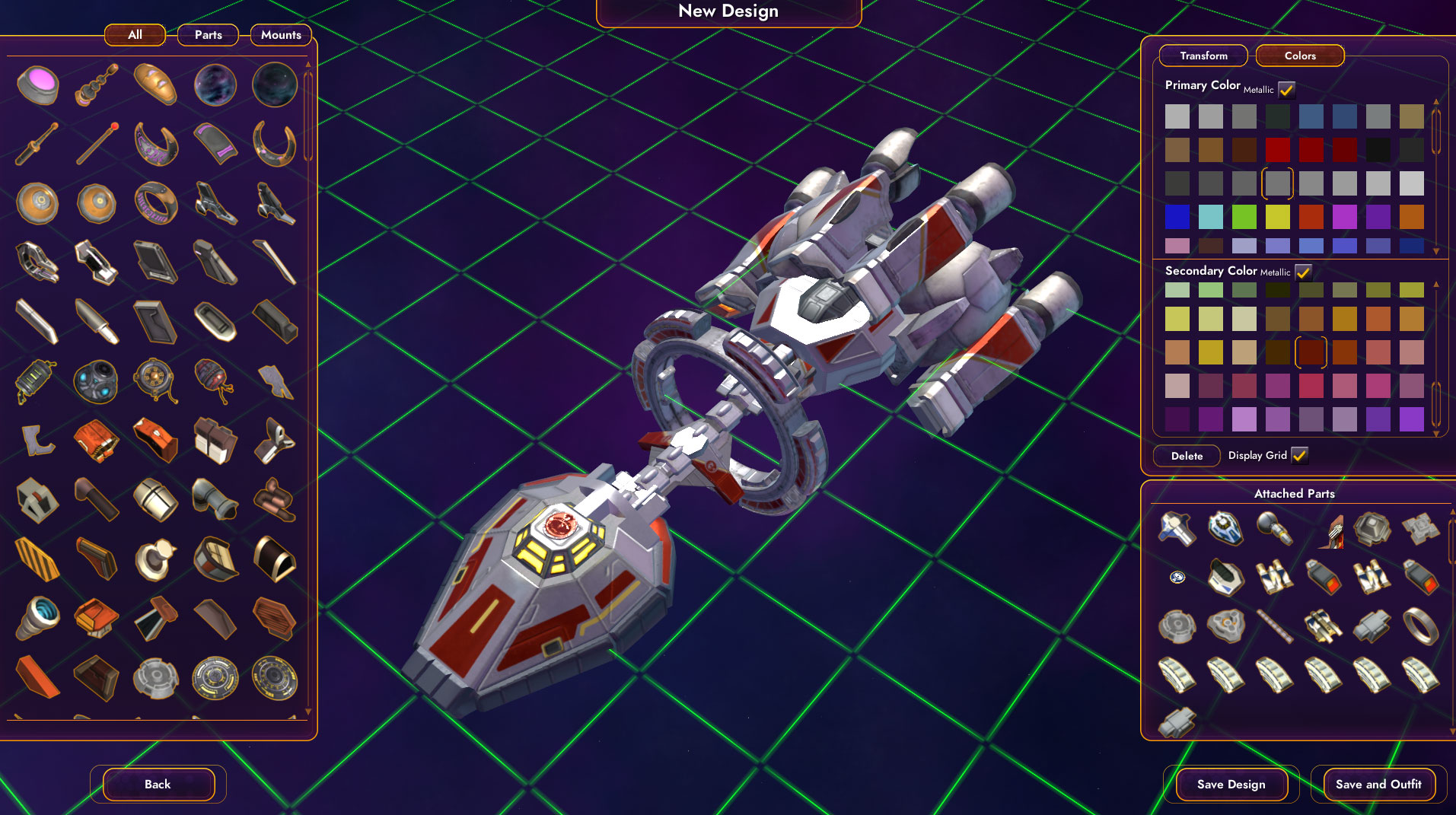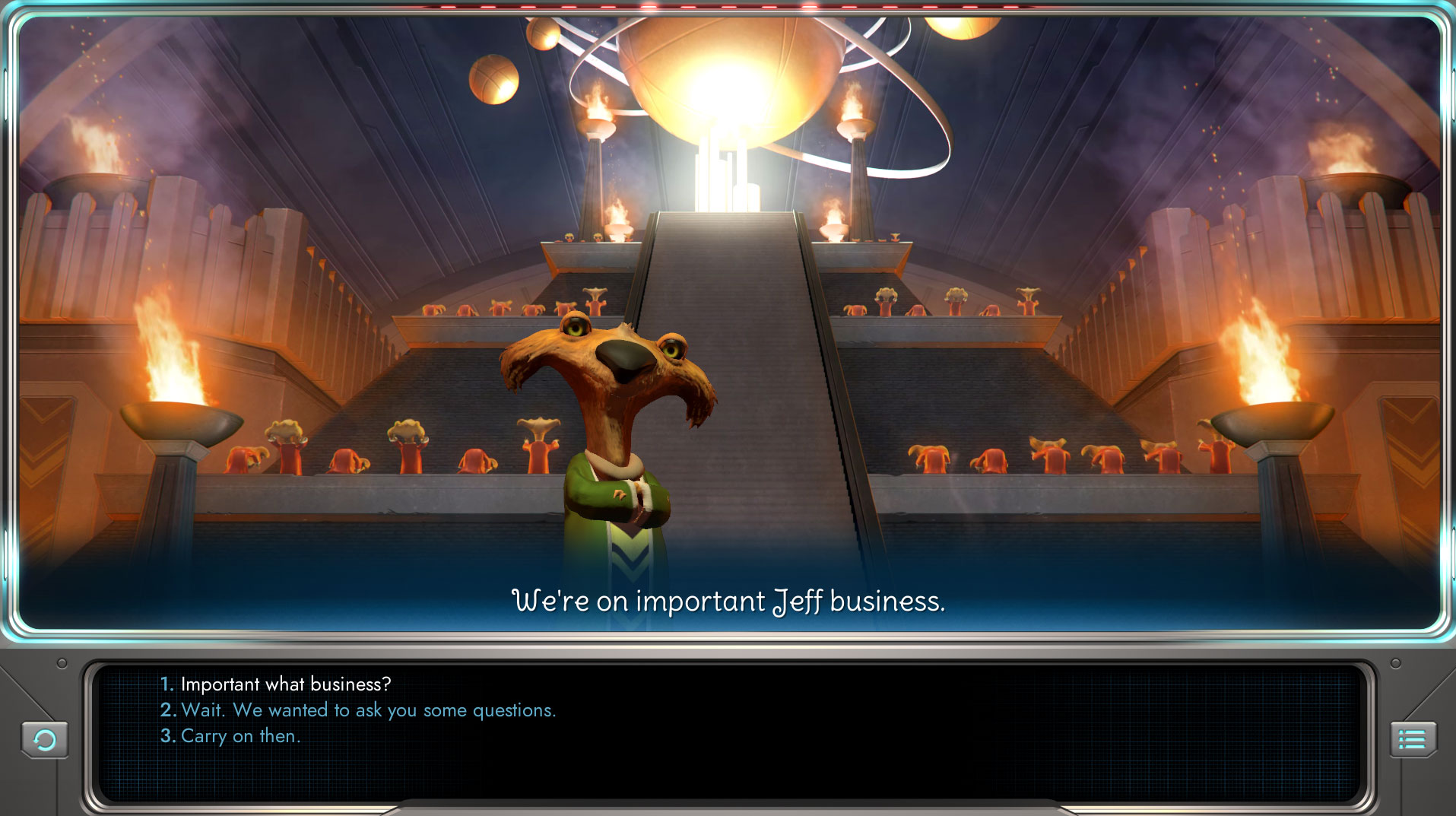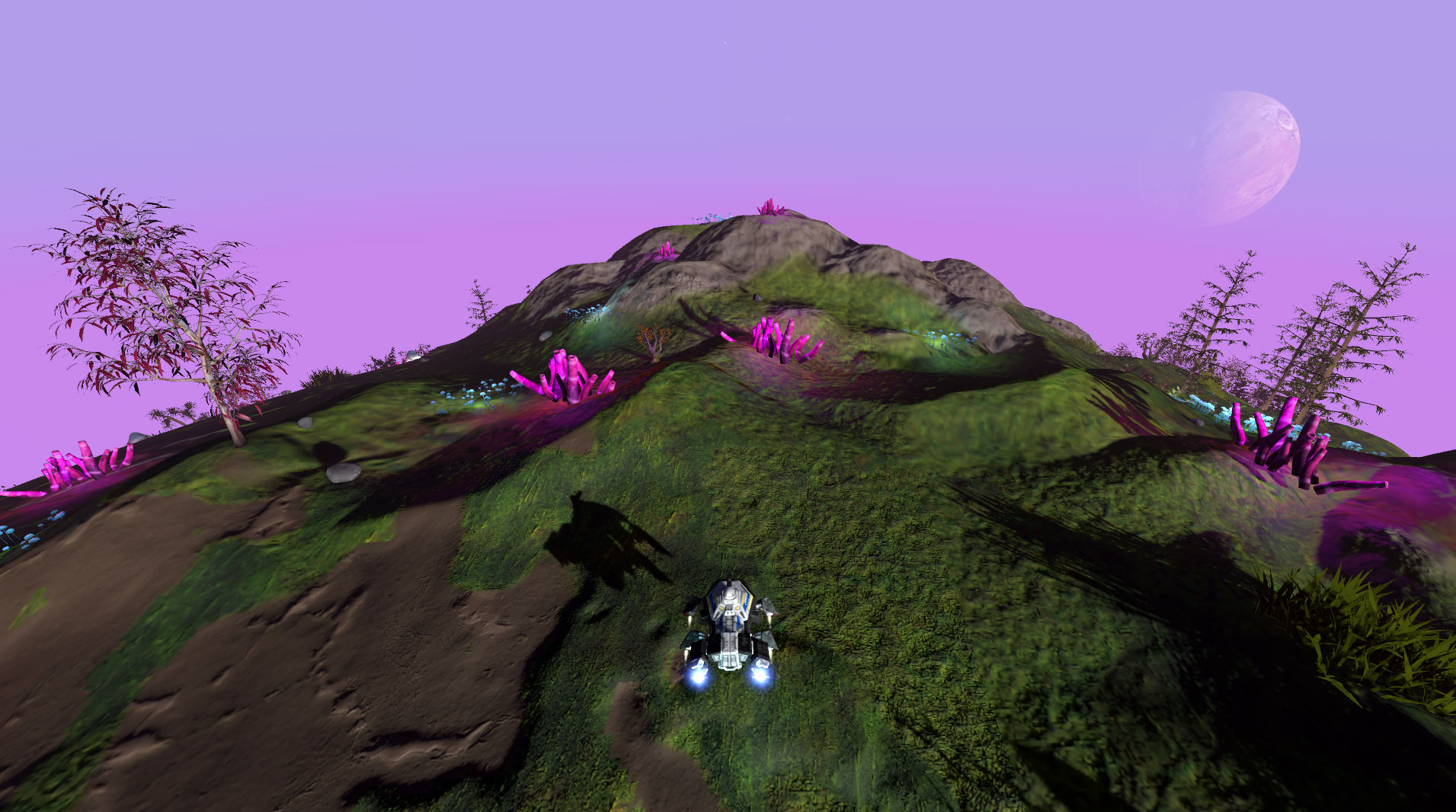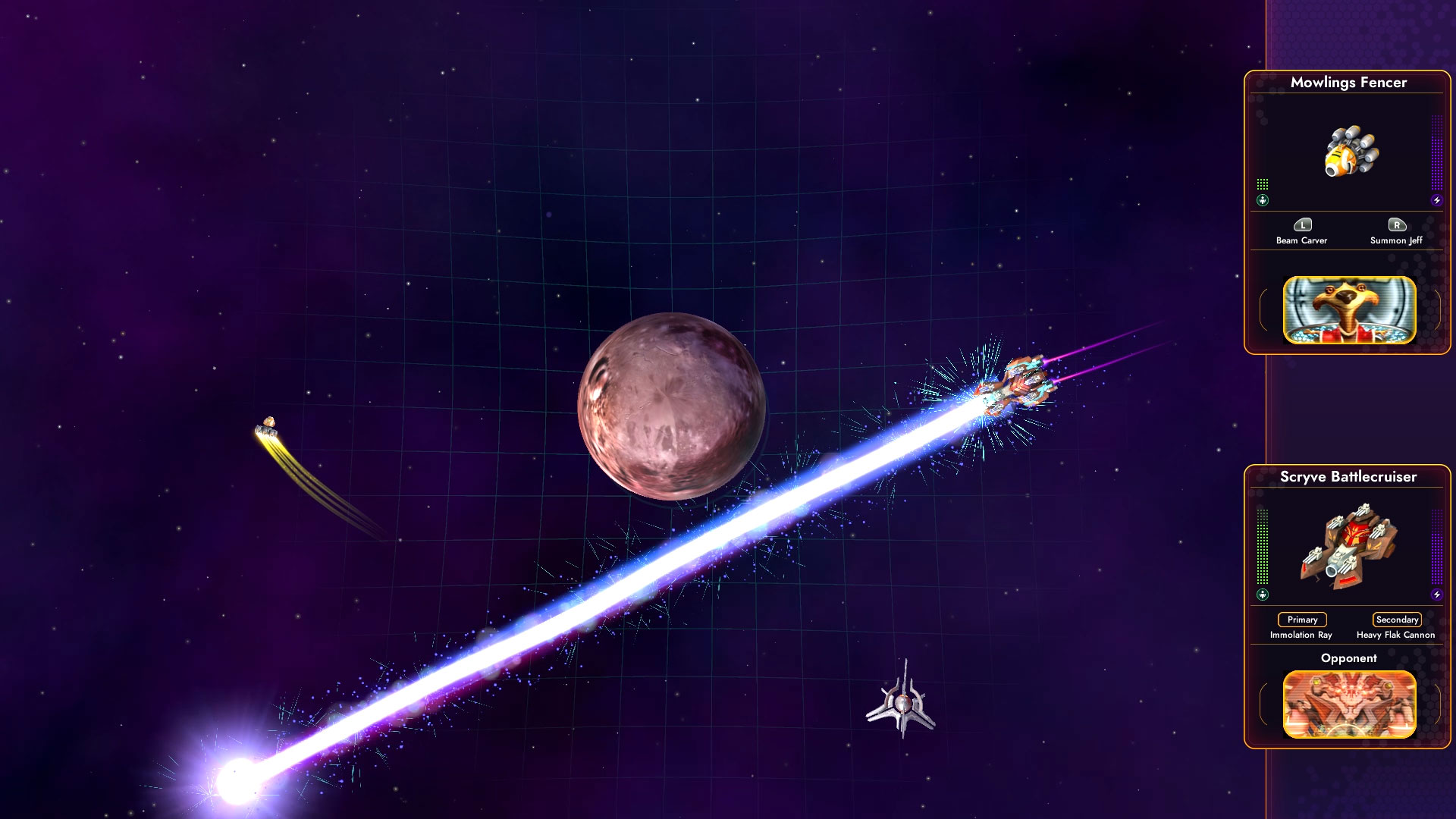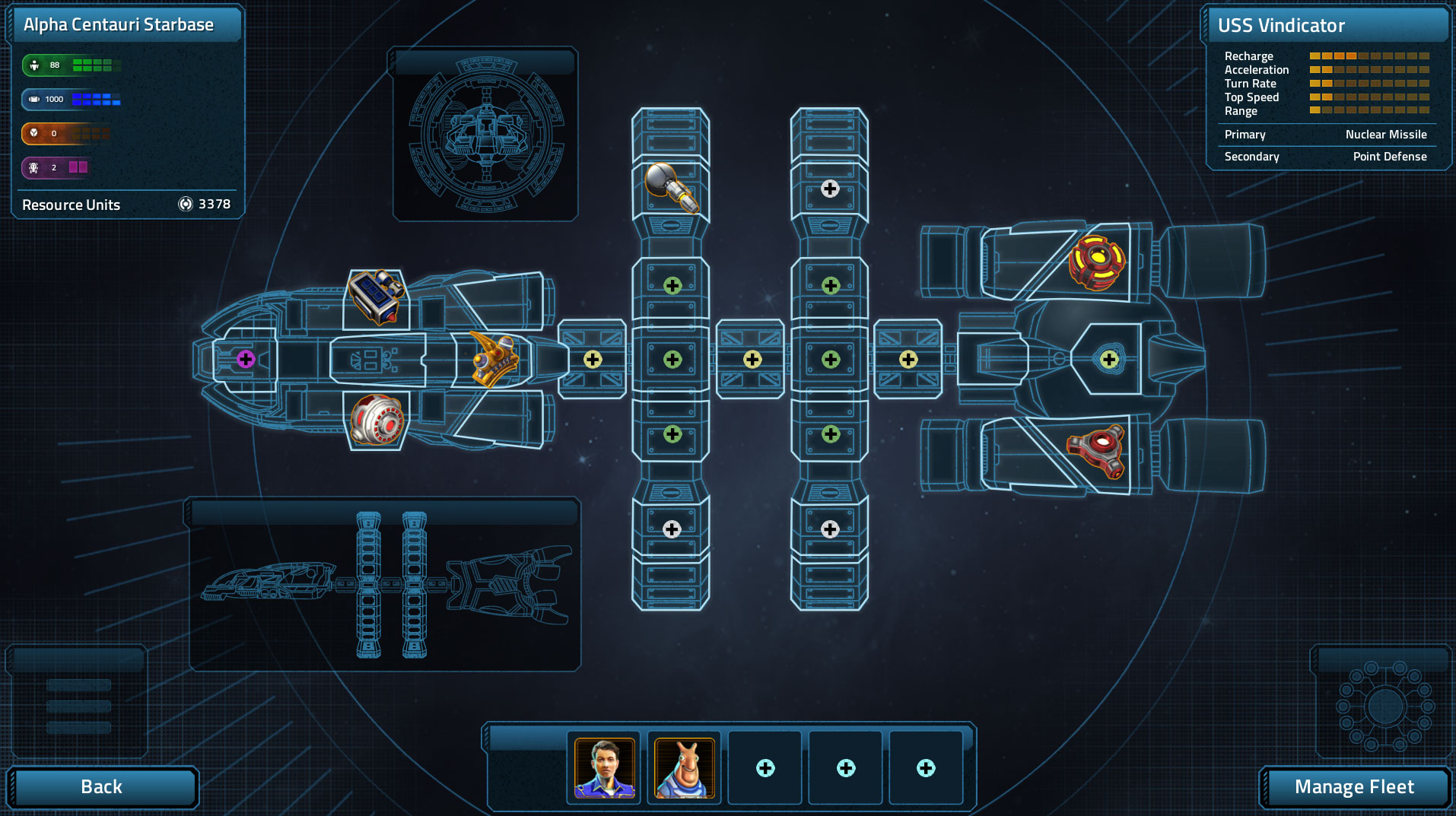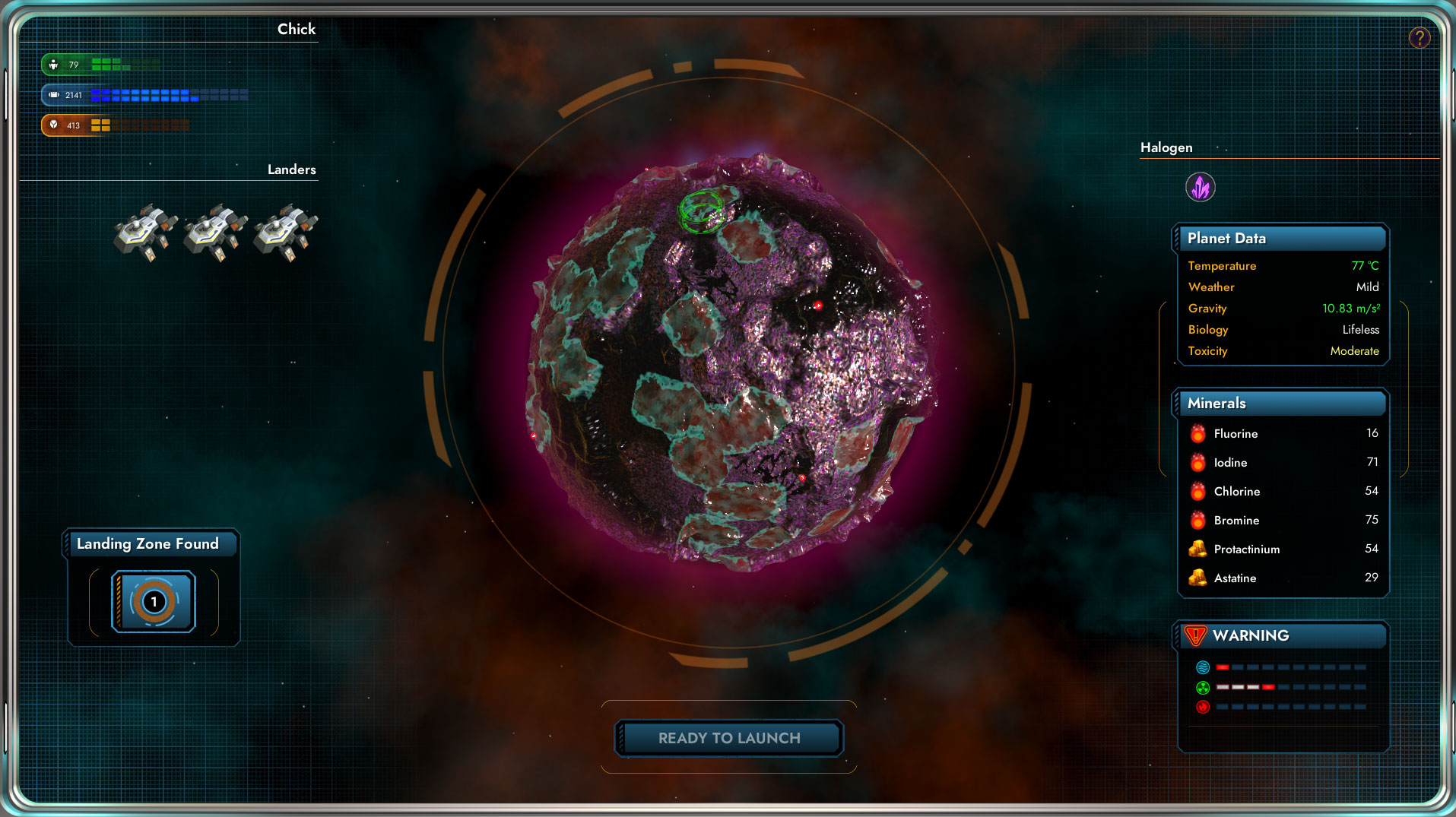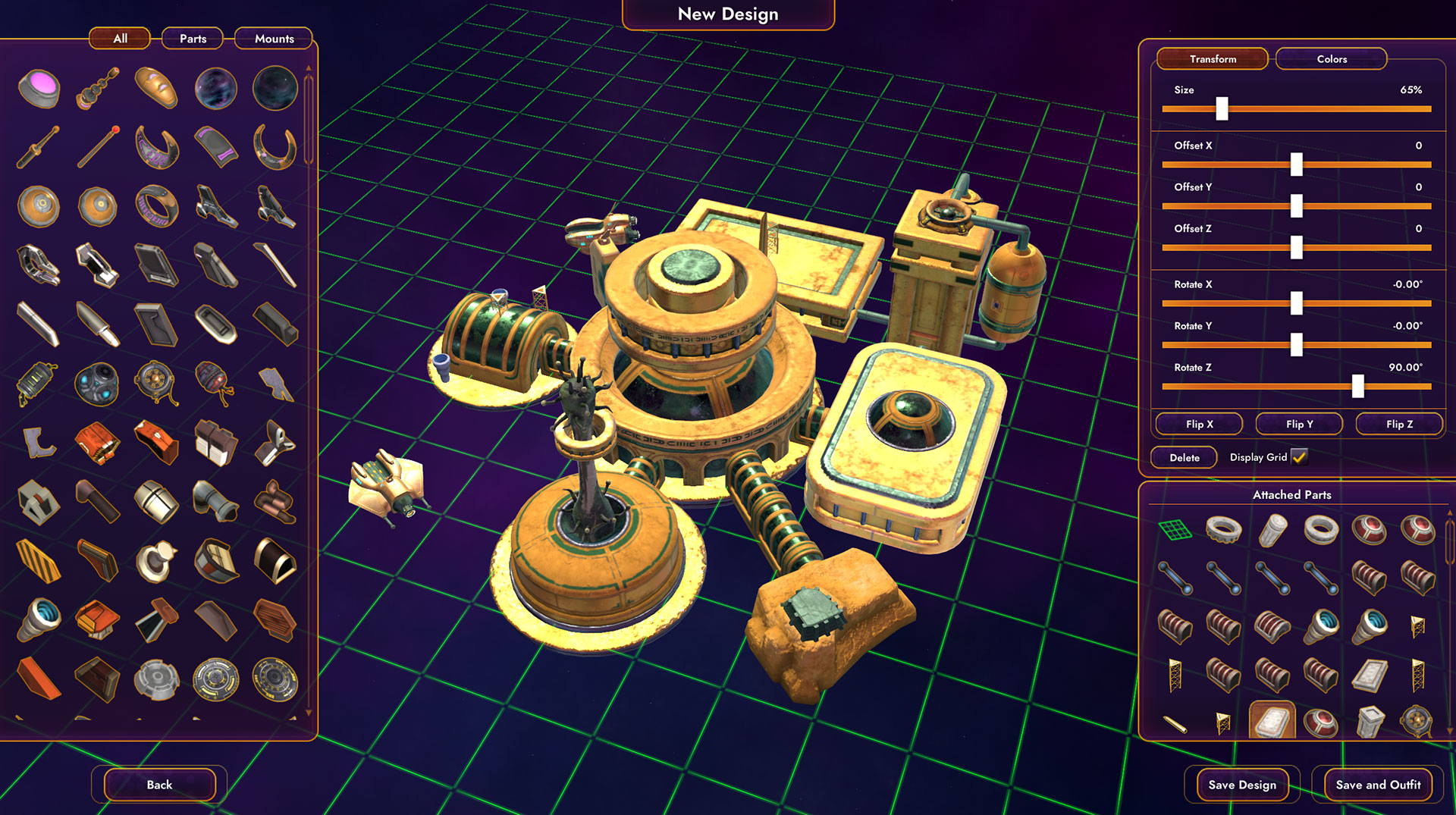I’m out of gas again.
Stuck several thousand light years away from Earth or any allied planets, I’m forced to float in empty space while I wait for rescue in the form of, ugh, the Tywoms.
The slow, sweaty, cheerful alien on my communicator screen offers to tow me home, but only if I listen to the next chapter of his totally-not-Star Trek fan fiction. The mustard-colored bastard has actually made pretty decent progress in his fanfic- his two main characters are already making eyes- but I’m thankfully kept from hearing about the rest as I’m dropped off at Earth to refuel.
Star Control: Origins by developer Stardock (of Sins of a Solar Empire fame) is a bit of an odd duck for those with only a passing familiarity of space sims (like me!). A genre famous for its complex, interlocking systems and rather daunting barrier of entry, SC:O proves itself a much more casual affair with its simple controls and straightforward gameplay.
The premise is pretty par for the course; Humanity has reached the space age, only to draw the wrathful gaze of an evil galactic empire upon itself. Now, as the commander of Earth’s only spaceship, you must gather allies from the empire’s oppressed and save the universe. It’s nothing that will blow your socks off, but it is helped by the outstanding character designs and greatly enjoyable dialogue. Every new alien race you meet is a completely unique creature, with their own vibrant personalities, speech patterns, and appearances.
The Tywom for example, are the first aliens you meet. They’re friendly and annoying; a civilization of losers who nobody else wants to bother with. They’re yellow, slug-like beings with nasally voices who love to give you oh so sweaty hugs. On the other end of the spectrum, there’s the Scryve – evil space centaurs with ceremonial war masks and deep, villain voices who can do nothing but talk about how painfully they’re going to kill you.
Interactions with these alien races are hugely enjoyable, if somewhat limited. The writing is phenomenal. I laughed out loud more in the first four hours of gameplay than I did in the entirety of some other games. The situation never gets too dark that you’re left without a quip to give, and the game has that very rare quality of having only good quips to give. Even if you’re never really going to be able to talk yourself out of a fight, at least you can give whoever’s bothering you some excellent pre-fight banter before you blow each other to hell. It’s easily S:CO’s best asset, which is rather important because certain parts of the game don’t quite measure up.
Landing on a planet for example, really, really sucks. You’ve got to send down a lander vehicle to a planet in order to gather materials, but once you’re actually harvesting the game quickly becomes a struggle with terrible physics and boredom. All you do to collect materials is run over glowy bits while dodging natural disasters such as tornadoes, volcanic eruptions, and charging rhino beetles. The planet’s surface however, is often horribly uneven, and your lander often refuses to navigate even the simplest of obstacles.
I have had my lander refuse to climb a very tiny ridge, and yet not two minutes later rocket over a hill and fly over my target material. It’s all very droll stuff, and often times feels unrewarding because 90% of the materials you harvest is useless for anything but selling. Why bother making so many different glowy bits if they’re all good for just the same thing? I also saw a lot of performance problems whenever I would land on a planet. Come on Star Control, I know my rig is old but these planets look right out of Spore!
When you’re not harvesting from planets, which is unfortunately an enormous part of the game, you do get to have space battles, which fortunately are also an enormous part of the game. These sections kick ass; setting you up in a 1-on-1 bumper car blast-a-thon with more meteors, gravity fields, and space weaponry than you could ever want.
These battles are easily the most fun you can have in SC:O, with the combat being sufficiently fast and quite arcadey. There’s no proper strafing here; the only thing that will actually move you is the forward button, and the rest of your directional keys orient your ship. This means you don’t actually have all that much fine control, which the game takes full advantage of. The field is strewn with wormholes that act as teleporters, gravity fields that can pull in wayward ships, various powerups, and large asteroid fields that slowly chip away at your health when you run into them.
The ships themselves come with a wide variety of builds and weapons. You start out with a slow moving mothership armed with a basic nuclear missile (humanity is not a race that half-asses its guns), then diversify by adding new weapons and ships to your fleet by forming alliances and salvaging wreckage. Some, like the Tywom fighters, are ridiculously fast and powerful. Others like the Scryve Battlecruiser, are as slow as your mothership but are just as tanky, and armed with a very, very big laser. The only downside to all the variety is that there’s no way to safely test out a new ship or weapon without going into actual combat, so you could find yourself stuck with a peashooter ship plinking away helplessly at an absolute unit of a war machine.
Finally, SC:O has one last trick up it’s sleeve, courtesy of the free Multiverse DLC they rolled out one month after release (hey sometimes it pays to wait!), a world editor and mod support. The world editor is gigantic, letting you make your own versions of everything from ships and weapons to your own solar systems. It also comes with something called “The Adventure Studio”, which lets you write your own quests to to play in-game. While I’ve certainly not been able to pierce the full depths of the tool, I can say it’s a godsend for those who found regular space travel as boring as I did. Stardock have also been kind enough to release tutorials on how to mod the game, while releasing two new example mods that add new gameplay mechanics called Bounty Hunter and The Galactic Zoo.
Although I’m not quite sure yet if the world editor is enough to alleviate my boredom with regular space travel and material harvesting (which is still rather droll), messing around with it does make for a welcome break. SC:O also just straight up puts a space battle arcade mode in its main menu for online or 2-player vs, just in case all you really want to do with the game is fire a nuke into a wormhole and watch it surprise the guy sitting too near the exit portal.
Conclusion
{rating}
All in all, Star Control: Origins perhaps bites off more than it could chew, by making a whole galaxy to plunder without knowing how to make plundering very fun. The world editor is pretty cool however, and space battles are genuinely exciting, so I think I’ll keep playing it for just a little longer. At least, I’ll let the Tywon finish their fanfiction. It’s not all that great, but it’s hard not to admire the effort.

